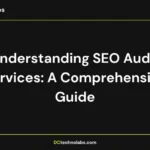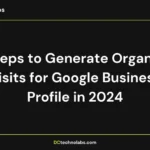
In today’s digital age, having a well-designed website is crucial for any business or personal project. A good web design can engage visitors, convey information effectively, and drive conversions. This blog will explore the fundamental elements that make a website great, ensuring it stands out in the vast online landscape.
Table of Contents
1. Clear Purpose
Having a clear purpose means knowing what you want your visitors to do. For instance, an e-commerce site’s primary goal is to sell products, so everything on the site should guide users toward making a purchase, from product descriptions to checkout processes. An informational site aims to provide valuable content, so it should prioritize easy access to articles, blogs, and other resources. A portfolio site showcases an individual’s or company’s work, with the goal of impressing potential clients or employers with their skills and achievements. You may efficiently fulfil your goals by customizing your website’s appearance and content by defining its purpose.
2. Simple and Clean Layout
A clean layout means removing unnecessary elements that could distract or confuse visitors. Whitespace, also known as negative space, is crucial as it gives the content room to breathe and makes the site look less messy. Using a grid system ensures that your content is aligned and organized, making it easier for users to follow. For example, having a consistent structure for headers, paragraphs, and images helps create a harmonious look and feel. Each element on your page should serve a purpose, whether it’s a call-to-action button, an image, or a piece of text. If an element doesn’t contribute to the user experience, consider removing it.
3. Easy Navigation
Easy navigation starts with a well-organized menu that categorizes content logically. The menu should be visible and accessible from all pages, allowing users to explore different sections of the site effortlessly. Breadcrumbs are another useful navigation tool, showing users their current location within the site’s hierarchy and allowing them to backtrack easily. Additionally, the information flow should be logical, guiding users naturally from one section to another. For example, an e-commerce site might guide users from the homepage to product categories, individual products, and then to the checkout process. Clear calls to action and search functionality can also enhance navigation, helping users find what they need quickly.
4. Mobile Responsiveness
Mobile responsiveness is essential because more people are using their smartphones to browse the internet. A responsive website adjusts its layout based on the screen size and orientation of the device being used. This means that your website will look and function well whether it’s viewed on a large desktop monitor or a small mobile screen. Flexible layouts ensure that elements like text, images, and buttons resize and rearrange themselves to fit the screen properly. Scalable images adjust their size without losing quality, and CSS media queries allow you to apply different styles based on the device’s characteristics. Ensuring your website is mobile-ready not only improves user experience but also boosts your site’s search engine rankings, as search engines like Google prioritize mobile-friendly sites.
5. Fast Loading Times
Fast loading times are critical because users expect websites to load quickly. Visitors are likely to leave your site before they view your content if it takes too long to load. Large image files can slow down your site, so it’s essential to optimize images by compressing them without losing quality. Server performance also plays a role; ensure you have a reliable hosting provider. Reducing the amount of code on your pages by minifying CSS and JavaScript files can also speed up your site. Additionally, using a CDN can distribute your content across multiple servers around the world, reducing the distance between the server and the user, and thus speeding up load times.
6. Consistent Branding
When we talk about consistent branding, it means every part of your website reflects your brand’s identity. This involves using the same colour scheme, typography, and logo placement on all pages. For instance, if your brand uses blue and white colours with a specific font on your business cards and promotional materials, these should be reflected on your website as well. This consistency helps reinforce your brand in the minds of your visitors, making it easily recognizable. Apple and Nike websites are two excellent instances of this. Every page on these sites reflects their brand’s essence, from the minimalist design to the specific tone of the text. This not only enhances visual appeal but also builds trust as visitors feel they are engaging with a professional and reliable brand.
7. Quality Content
Retaining visitors to your website requires high-quality content. Well-written, informative, and of use to those who read you are the three main requirements. They break up the text and provide visual interest, making your site more appealing. Regularly updating your content is crucial. In addition to keeping visitors interested, frequently updated content improves your website’s search engine results. Blog posts, articles, and case studies are excellent ways to keep your content current and valuable. These updates show that your site is active and continually providing new information, which can help build a loyal following.
8. Accessibility
Accessibility is about making your website usable for everyone, including people with disabilities. This means your site should work well with screen readers, which helps visually impaired users navigate the web. Providing text alternatives for images, such as alt text, ensures that these users can understand the content of images. Ensuring your site can be navigated using a keyboard is also important, as some users may not be able to use a mouse. Tools like WAVE (Web Accessibility Evaluation Tool) and guidelines from the WCAG (Web Content Accessibility Guidelines) can help you identify and fix accessibility issues on your site. By making your site accessible, you ensure that all users, regardless of their abilities, have a positive experience.
9. Visual Appeal
Visual appeal is crucial for capturing and retaining the attention of your visitors. A well-designed website with attractive colours, clean typography, and high-quality imagery can make a strong first impression. Choosing the right colour scheme can evoke specific emotions and convey your brand’s personality. For example, blue often represents trust and professionalism, while green is associated with growth and tranquillity. Typography should be easy to read and consistent throughout the site. Images should be high quality and relevant to the content. However, while aesthetics are important, they should not come at the expense of functionality. Your site should still be easy to navigate and use. Striking the right balance between aesthetics and functionality ensures that your site is not only beautiful but also user-friendly.
Get a Good Web Design from DC Technolabs
DC Technolabs is dedicated to building websites that incorporate these essential elements. We focus on creating sites with a clear purpose, simple and clean layouts, easy navigation, mobile responsiveness, fast loading times, consistent branding, quality content, accessibility, and visual appeal. Our goal is to help you create a website that not only looks great but also performs exceptionally well. Whether you are starting from scratch or need a redesign, our team of experts is here to assist you in achieving your web design goals.
Conclusion
In summary, a great website is one that has a clear purpose, a simple and clean layout, easy navigation, mobile responsiveness, fast loading times, consistent branding, quality content, accessibility, and visual appeal. By focusing on these basics, you can create a website that not only looks good but also performs well. Take a moment to evaluate your own site based on these principles, and see how you can make improvements. Share your thoughts and experiences in the comments below.
By concentrating on these fundamental aspects, you can ensure your website stands out and provides an excellent user experience. Evaluate your current site using these principles as a guide, and consider making adjustments to enhance its effectiveness. If you need assistance, DC Technolabs is here to help you create a website that truly shines.
If you found this blog helpful, check some of the other blogs below:
- Understanding SEO Audit Services: A Comprehensive Guide
- Top Benefits of a Website for Small Businesses in 2024
For more insights and tips on web design, follow us on our social media platforms: Instagram, Facebook, LinkedIn, and Twitter.






